Directing Audio¶
Here we explain how to pipe your system audio directly to LedFx without having to use a microphone or any other peripheral devices.
Linux¶
Tested on Ubuntu 20.10 64-bit
Requirements
Instructions
In the LedFx UI under “Settings” -> “Audio Input”, choose “pulse” as the current device
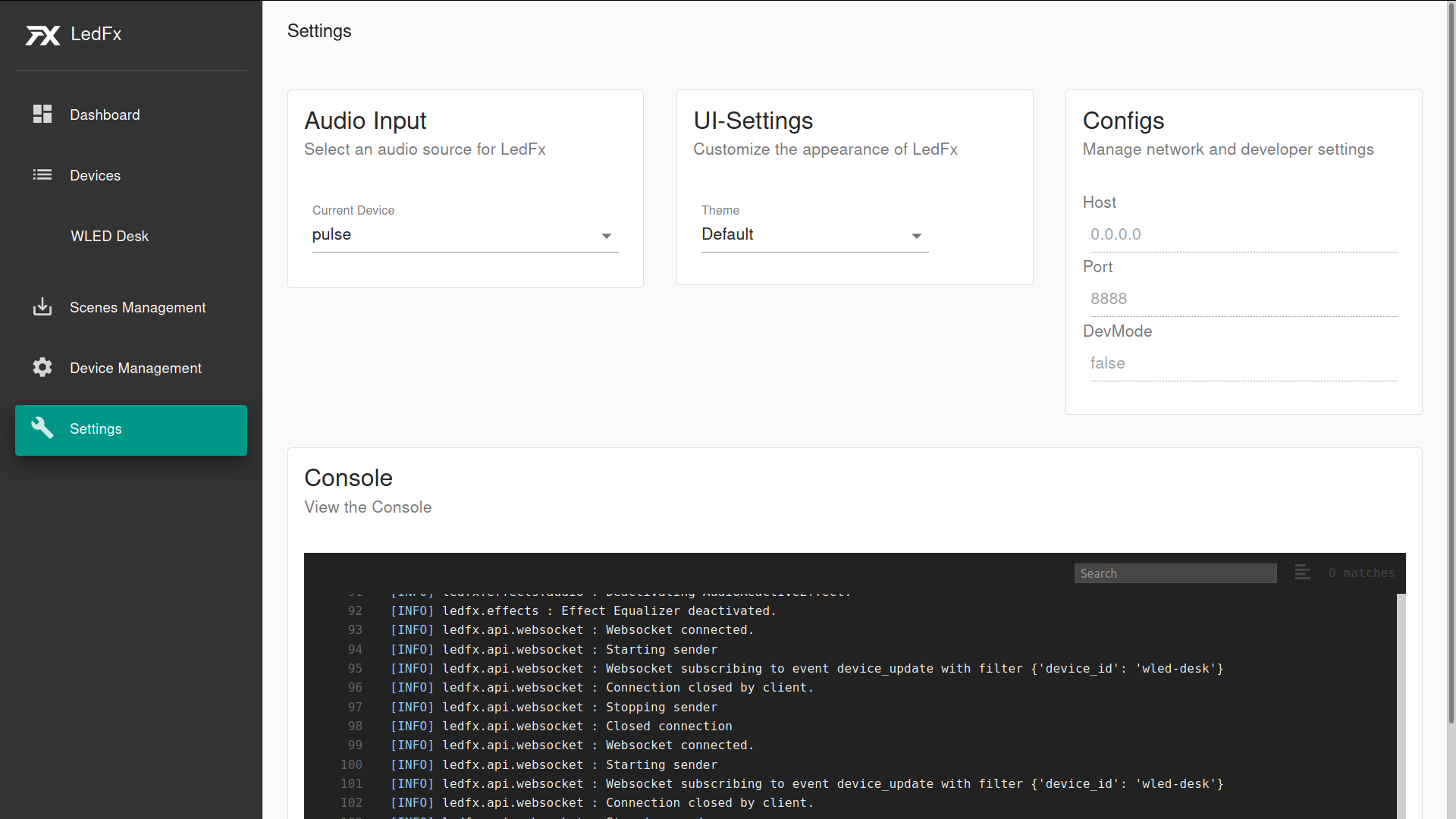
In PulseAudio Volume Control under “Recording”, choose “ALSA plug-in” and set “Capture from” to the audio stream you want to capture (e.g. “Monitor of Built-in Audio Analog Stereo”)

Linux CLI¶
Note
Python will not show in Pulsemixer until pulse is set like Audio Input in LedFx UI and some reactive effect is set and send to device.
Tested on Ubuntu 20.10 64-bit, Raspberry Pi OS (32 and 64-Bit)
Requirements
Instructions
In the LedFx UI under “Settings” -> “Audio Input”, choose “pulse” as the current device

In Pulsemixer under “F1 Output”, choose your audio application and move it to output stream you want to listen on (e.g. “Built-in Audio Digital Stereo”)
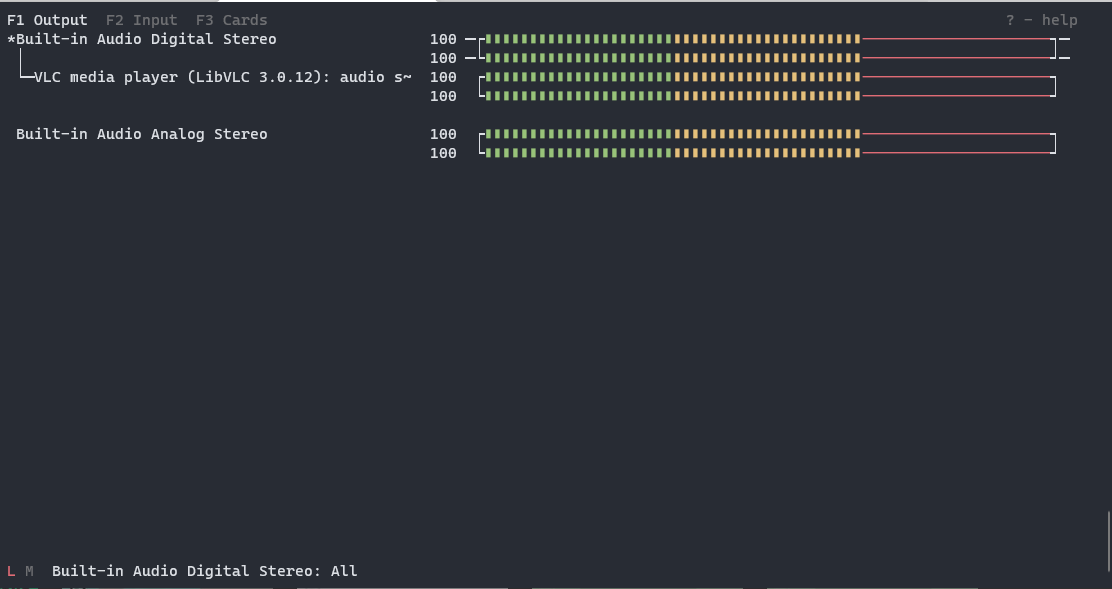
In Pulsemixer under “F2 Input”, choose “python” and move it to the audio stream you want to capture (e.g. “Monitor of Built-in Audio Digital Stereo”)
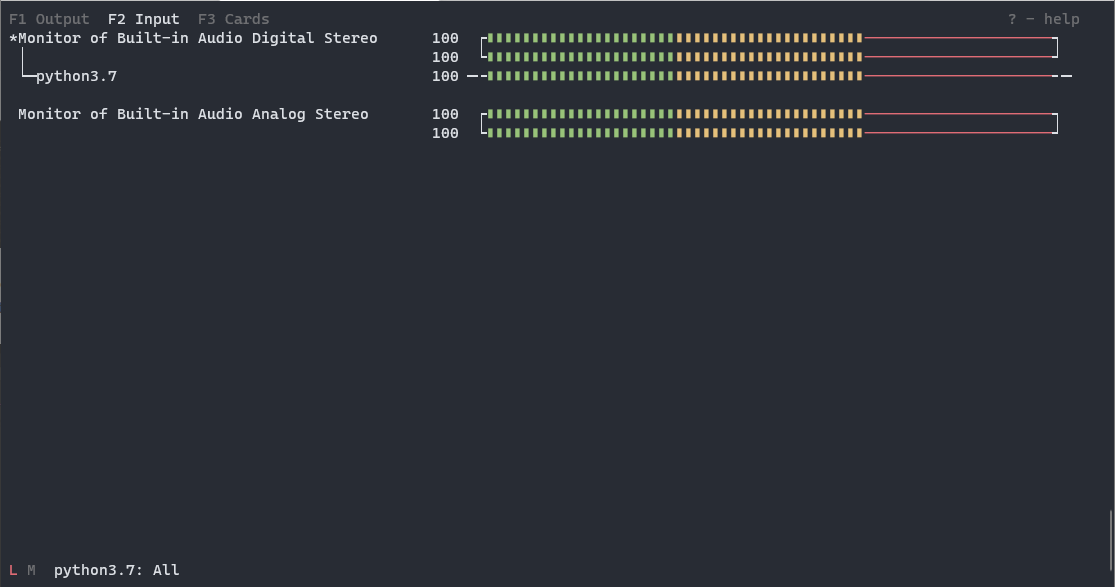
macOS¶
Tested on macOS Catalina 10.15.7
Requirements
Instructions
In Audio MIDI Setup, create a Multi Output Device
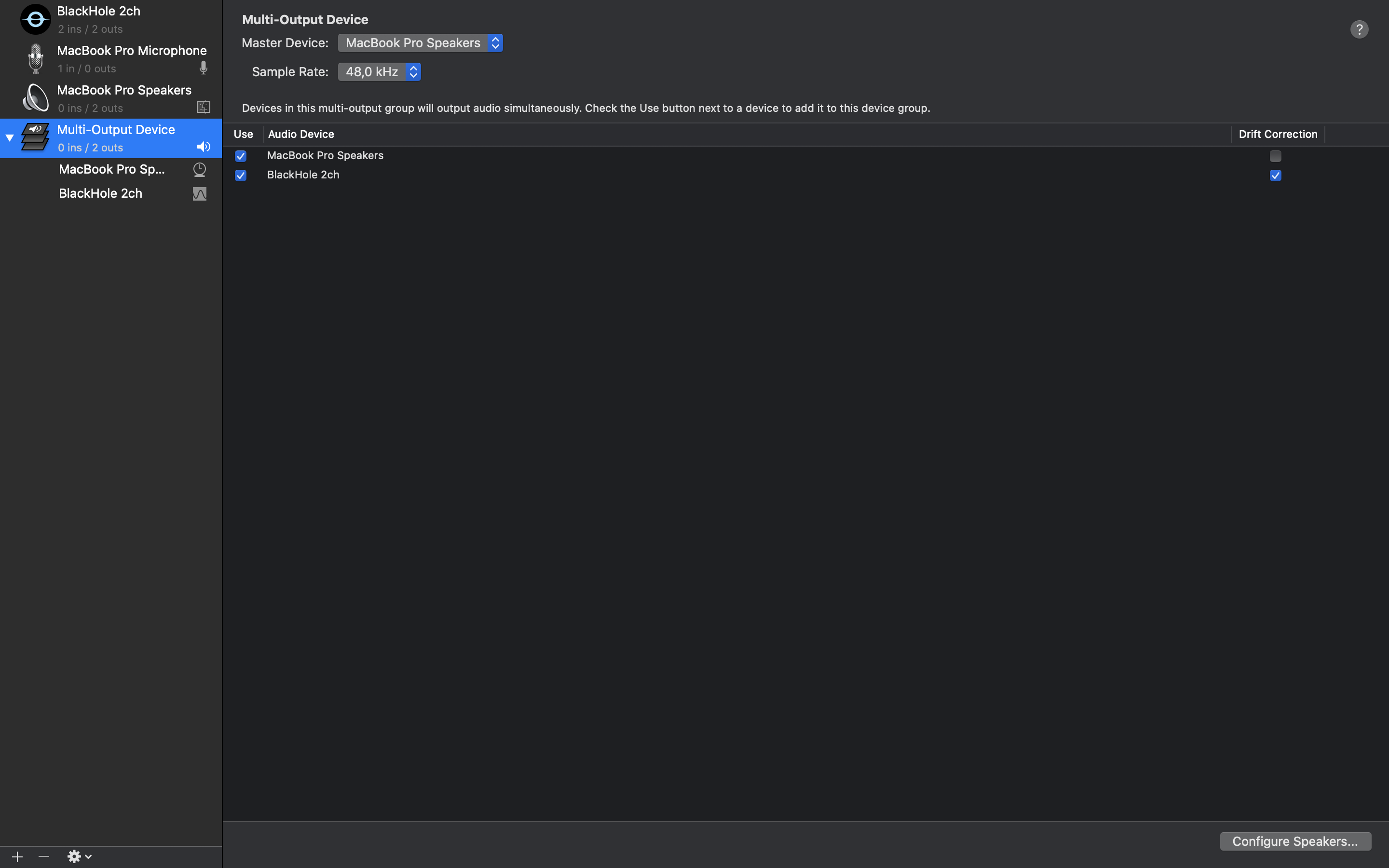
In Audio MIDI Setup, choose “BlackHole 2ch” and set it as “Input”
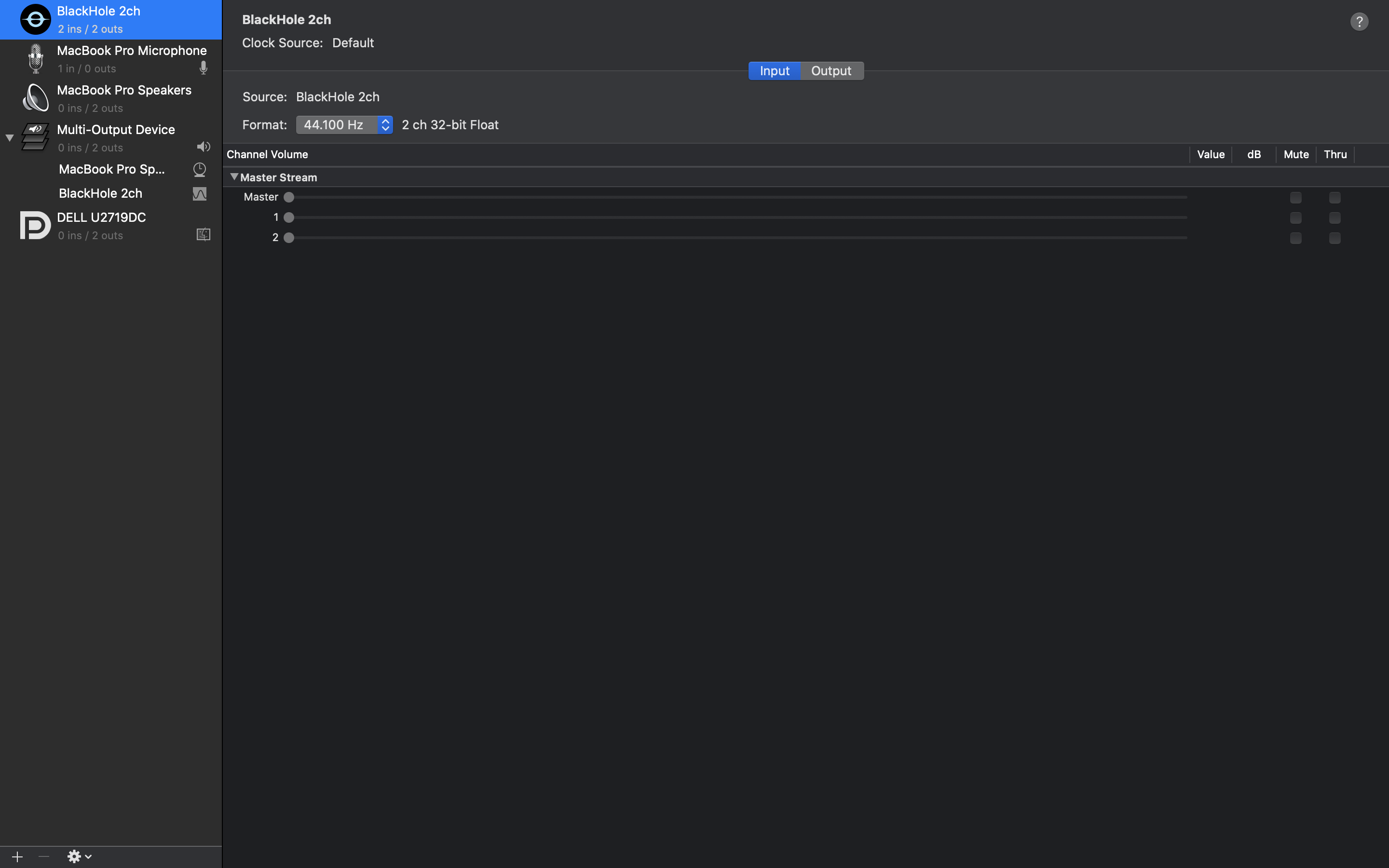
In the LedFx UI under “Settings” -> “Audio Input”, choose “BlackHole 2ch” as the current device

Alternatives
Loopback: Can direct the audio output of individual applications but requires expensive license to run more than 20 minutes.